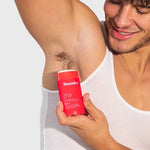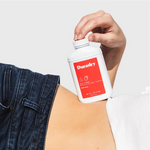Glycopyrrolate is an anticholinergic drug that works by inhibiting acetylcholine activity in the nervous system. By blocking acetylcholine, glycopyrrolate reduces saliva and stomach secretions. It also helps reduce the symptoms of hyperhidrosis, bronchospasm, low heart rate, and intestinal hypermotility. This medication is also used to treat peptic ulcers in adults and chronic severe drooling caused by neurological conditions in children. It is an anticholinergic medication and is available only by prescription.
Considerations
Glycopyrrolate is usually taken in tablets or a solution. It should be taken on an empty stomach. For children, the dose should be taken about an hour before or two hours after meals. It is important to follow the instructions carefully. This medication can cause blurred vision and dizziness. It may also cause constipation. These side effects may worsen if you have other medical conditions, such as liver or kidney impairment. If you have a history of these conditions, you should consult your healthcare provider immediately.
This drug may have interactions with other medications.
Glycopyrrolate treats excessive saliva production
It is not known what causes excessive saliva production. Although several factors are involved, the primary factor in determining whether a drug is effective is whether or not it has a direct connection with the symptoms of the condition. Some studies show that oral cholinergic muscarinic receptors are affected. While this is one possible cause of excessive saliva production, it has also been linked to numerous side effects, including urinary retention, flushing, and constipation.
Glycopyrrolate is an anticholinergic drug that inhibits acetylcholine receptors in peripheral tissues, which reduces salivary production.
Glycopyrrolate is the only anticholinergic drug approved for oral administration by the FDA for the treatment of drooling in children. However, it is not without risks, including gastrointestinal, cardiovascular, and ophthalmic side effects.
Glycopyrrolate is not recommended for use by people with glaucoma, kidney, or liver disease, or a condition that affects the ability of the intestines to cool themselves. It is also important to avoid prolonged exposure to hot temperatures while on the drug.
Adjunct therapy for peptic ulcer disease
The presence of a peptic ulcer is usually accompanied by pain, which can be localized or diffuse in nature. Most patients report discomfort or burning in the epigastrium. Other symptoms may include a feeling of hunger. In most cases, peptic ulcer disease is recurrent and chronic. However, only about half of patients present with a distinct pattern of symptoms. In addition, patients with pyloric channel ulcers may experience symptoms of obstruction.
When determining the best adjunctive therapy, physicians should take into account the patient's severity and the severity of their ulcer. In addition, doctors should know the duration of the ulcer, which may be a factor in its healing potential. This is crucial for identifying the most appropriate treatment and for cost-effectively treating the disease.
In addition to surgical treatment, doctors may use nonoperative modalities to prevent ulcer recurrence. For example, anti-inflammatory drugs such as aspirin and NSAIDs may reduce the risk of ulcer recurrence. In addition, nonsurgical modalities can reduce the risk of complications associated with peptic ulcer disease and help patients live healthier lives.
Glycopyrrolate is used with other drugs to treat peptic ulcer. This medication may help relieve stomach/abdominal pain. However, it has not been shown to be effective in healing these ulcers, preventing them from returning, or preventing other problems caused by ulcers. Glycopyrrolate works by decreasing the amount of acid in the stomach. It also slows the natural movements of the gut and relaxes the muscles in the stomach/intestines.
How effective is glycopyrrolate for hyperhidrosis?
Glycopyrrolate is an oral medication that can treat hyperhidrosis. It is considered a cornerstone of hyperhidrosis treatment and has a low incidence of side effects when used as prescribed. However, patient counseling is essential for the best possible treatment outcomes.
Glycopyrrolate is commonly taken as an oral pill twice or three times a day. The dosage is based on the severity of symptoms and the patient's weight. Initially, the patient may start with a low dose, which can be gradually increased. However, do not increase the dosage without consulting your doctor. Increasing the dosage may not improve hyperhidrosis and increase the risk of side effects.
In addition to anticholinergic drugs, there are several other hyperhidrosis-related treatments available. These medications reduce the amount of sweat produced by the body and may improve the quality of life for sufferers. They are also inexpensive and easy to use.
Hyperhidrosis is a serious disorder that disrupts daily activities. For sufferers, the excessive sweating can interfere with their ability to live their lives and their relationships with others. The disorder can also cause significant anxiety and can affect romantic relationships. More than half of patients do not discuss their condition with their doctors, which can be debilitating.
Glycopyrrolate in addition to antiperspirants
When used in combination with antiperspirants, glycopyrrolate increases the anti-odor effect of the products. Moreover, it can be used in combination with perfumes to improve the deodorizing effect. This is particularly useful in liquid soaps.
Combining glycopyrrolate with antimicrobial glass can also be helpful in improving the performance of antiperspirants. These two compounds have excellent antibacterial, antimicrobial, and deodorizing properties. They can also be added to cosmetic preparations. However, it is best to consult a dermatologist before using any new product.
Glycopyrrolate is an anticholinergic drug that was originally developed for the treatment of peptic ulcers. This anti-acidant suppresses sweat production by blocking receptors in the brain.



